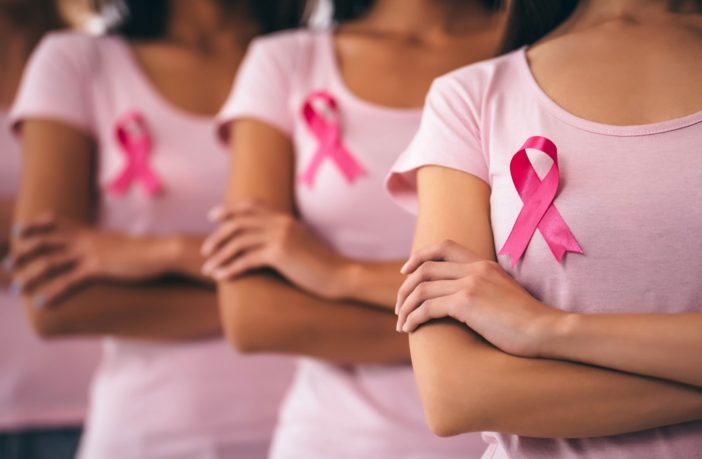Every October we recognize Breast Cancer Awareness month and the impact it has, especially on women. In the United States, approximately one in eight women will be diagnosed with breast cancer during their lifetime. While there is no cure for breast cancer, there are important steps that we can take when it comes to prevention.
The Signs and Symptoms
Different people have different symptoms of breast cancer, while some do not have any signs or symptoms at all. It is important to know how your breasts normally look and feel to be able to recognize any changes that may occur. While knowing what to look for is important, regular mammograms and clinical breast exams are crucial, as these tests can help detect breast cancer before symptoms show.
Signs of breast cancer may include:
Lump in the breast or underarm (armpit)Swelling or thickening of all or part of the breastDimpling or skin irritation of breast skinRedness, scaliness or thickening of the nipple or breast skinNipple discharge (other than breast milk)Any change in the size or shape of the breastPain in any area of the breast
Even if you receive a clear mammogram, call your health care provider if you notice any change in either of your breasts. A lump, thickening of or leakage from the nipple, or changes in how the nipple or skin looks, can signal a potential problem.
Get Screened
A mammogram is a low-dose x-ray picture of the breast. Mammograms won’t find every cancer, but they can help find breast cancer at an early stage, before it is big enough to feel or cause symptoms. This can lead to early treatment, a range of treatment options and better chances of survival. Women should ask their health care provider if and when a mammogram is right for them. Congress enacted the Mammography Quality Standards Act (MQSA) in 1992 to ensure all women have access to quality mammography for the detection of breast cancer in its early, most treatable stages. Always look for the MQSA certificate at the mammography facility, which is required to be displayed and indicates that the facility meets the national baseline standards for mammography.
How Does a Mammogram Work?
To get a mammogram, you will need to take off your shirt and bra. While standing in front of the mammogram unit, a technologist will position your breast on a small platform. A clear plastic plate will press down on your breast while a mammogram image is acquired. This compression of the breast helps spread out the breast tissue so that it doesn’t overlap as much, allowing for a clearer look at the breast tissue.
If you’re worried about how the procedure feels, you should know that most women do not find it painful. Some women may find the pressure on the breast uncomfortable, but it usually lasts for only a few seconds.
Thermograms and nipple aspirate tests are not substitutes for mammograms. Regular screening mammograms are important, and the risk of developing breast cancers varies from person to person, so it’s a good idea to ask your health care provider when and how often you should schedule a mammogram.
Getting Your Results
The FDA’s regulations already require that facilities provide patients an easy-to-understand summary of their mammography results within 30 days after the mammogram, and that they make reasonable attempts to communicate the results as soon as possible if indications of potential cancer are found.
The FDA has amended the regulations to require that facilities also provide you with information about whether your breast tissue is dense or not dense. Dense breasts have a higher proportion of fibro glandular tissue compared to fatty tissue. This is important, because dense breast tissue can make cancers more difficult to find using a mammogram and it is also now known to be an independent risk factor for developing breast cancer.
In addition, the FDA is requiring that facilities advise you to talk to your health care provider about breast density, risks for breast cancer and your individual situation. The idea is to provide information you can discuss with your provider to make better informed decisions, including if you need to consider any next steps.
If you do not receive your mammography summary report, call the provider who sent you for the mammogram to get your results or contact the facility where you had the mammogram performed to get the report resent to you.
Other Ways to Lower Your Risk
There are many factors that can influence your breast cancer risk, such as family history and getting older. There is no sure way to prevent breast cancer, but lifestyle changes can help lower your risk, such as:
Keep a healthy weight and exercise regularly.Choose not to drink alcohol, or drink alcohol in moderation.If you are taking hormone replacement therapy or birth control pills, ask your doctor about the risks.Breastfeed your children, if possible.If you have a family history of breast cancer, be sure to talk to your doctor about ways to lower your risk.
Source: FDA



